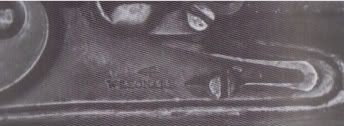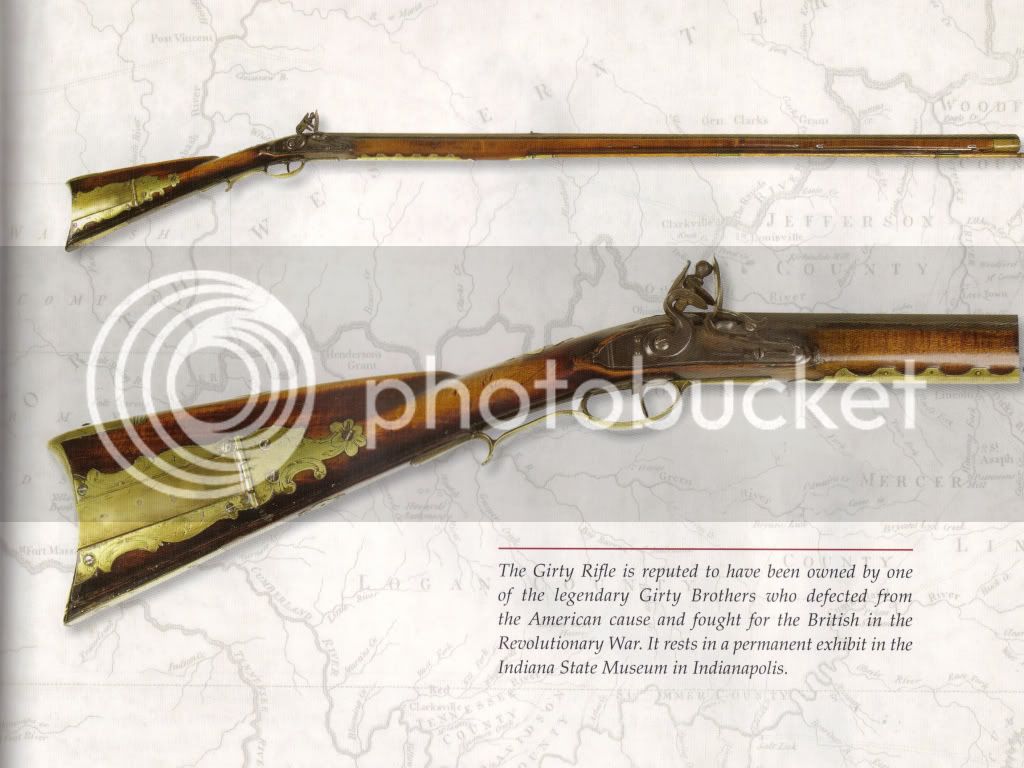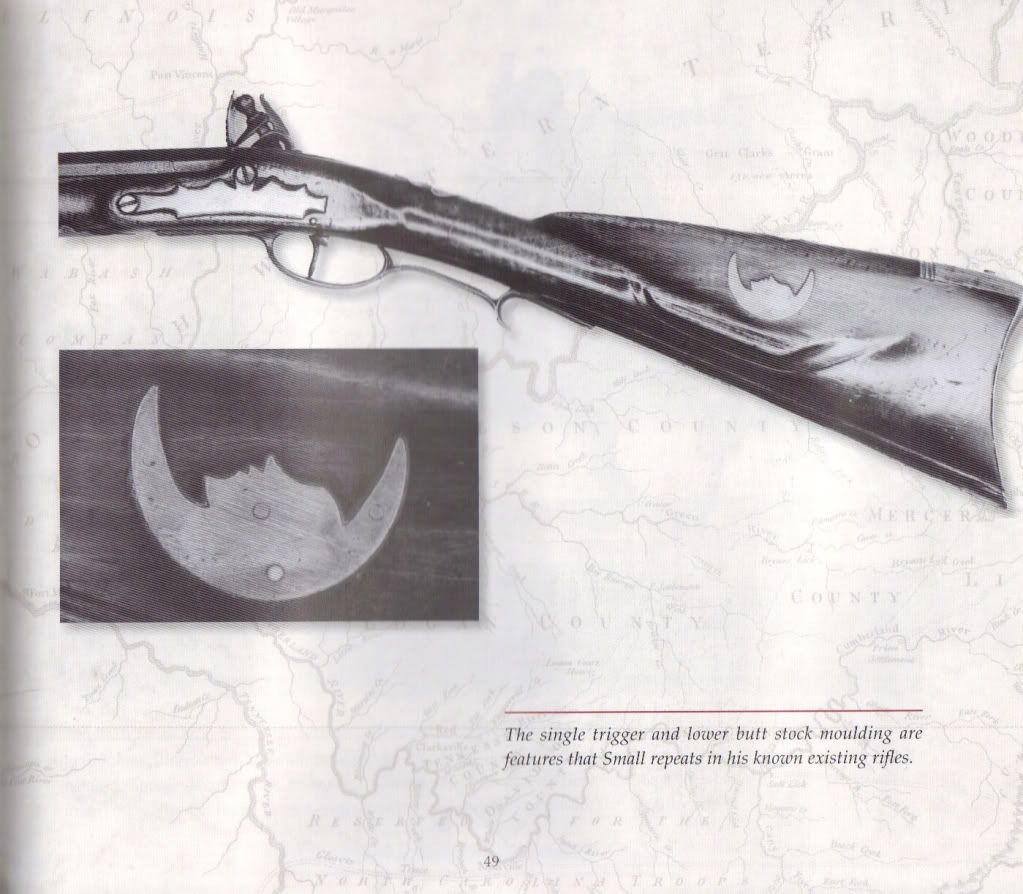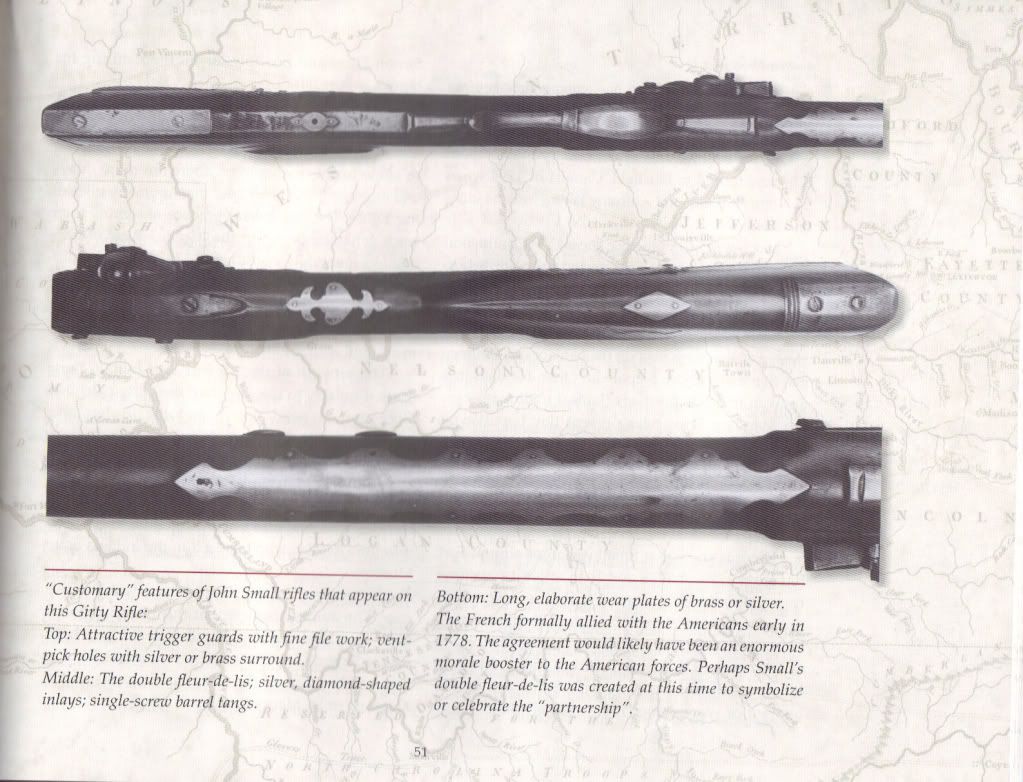I'm looking for any information on this lock. It looks like a late Ketland, but it is signed W. Leonard. Is anyone familiar with what looks like a proof symbol above the name?
The lock is part of a rifle that is thought to have been built between 1778 and 1783 by John Small. I did however find a listing of English lock makers and William Leonard showed up as Ordnance Contract Maker from 1806-1823.
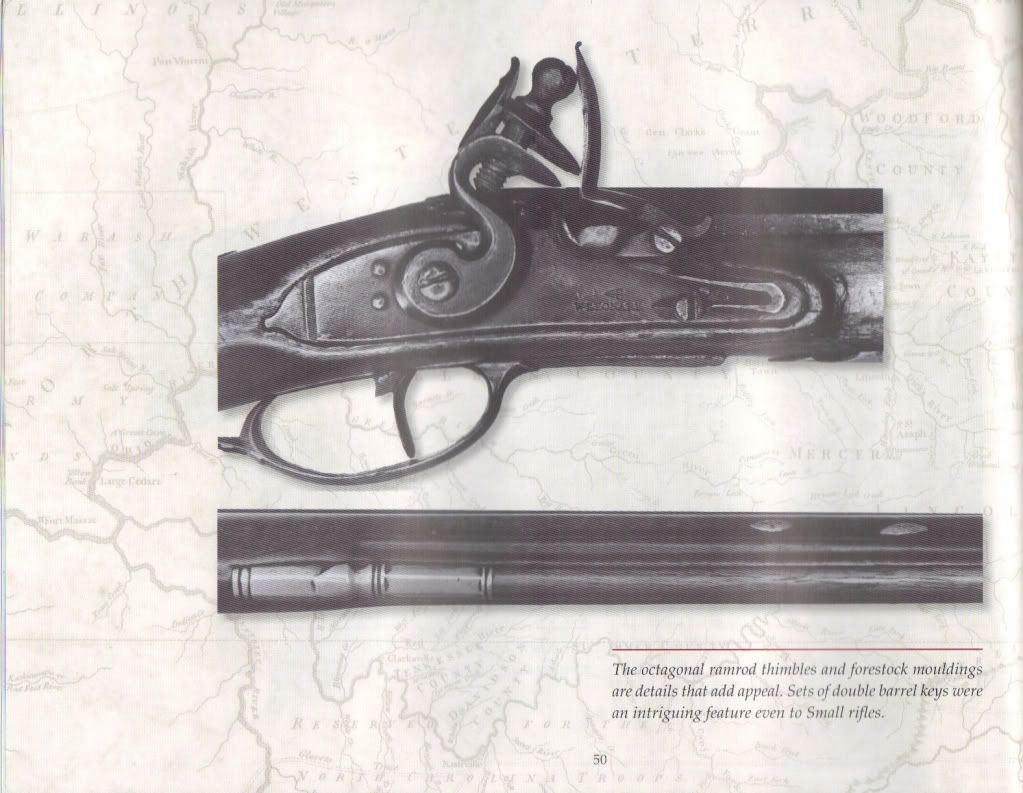
I'd be interested to hear anyone's thoughts on this lock.
The lock is part of a rifle that is thought to have been built between 1778 and 1783 by John Small. I did however find a listing of English lock makers and William Leonard showed up as Ordnance Contract Maker from 1806-1823.

I'd be interested to hear anyone's thoughts on this lock.





